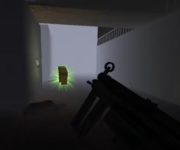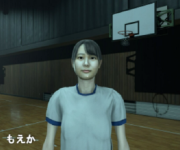White Knuckle
White Knuckle begins without introduction or explanation. The player stands at the bottom of a tall, decaying vertical structure. There are no other characters, no sounds except the metal groaning in the distance. The game does not explain why the climb matters or who made the place. All that exists is the distance between the ground and the unseen top. The structure is harsh and industrial, built from scaffolding, broken supports, and narrow walkways. The first movement upward feels like an experiment.
Effort as a System
The game is designed around physical limits. Movement uses stamina, and resting is necessary to avoid failure. Inventory space allows for useful items, but carrying too much reduces climbing efficiency. Each surface requires judgment: Is this ledge too far? Will this beam hold? There are no checkpoints, no save points. If the player falls from a high enough place, the climb resets entirely. Progress depends not just on skill, but on knowing when to pause and when to risk.
Design Structure and Mechanics
White Knuckle focuses on these core features:
- First-person climbing that requires stamina control
- Real-time inventory management with weight trade-offs
- Level layout that shifts on each playthrough
- Zero narrative exposition — only environmental storytelling
- Full reset on major failure, increasing pressure with height
These elements form a system where choice and caution are more valuable than speed or force.
Reading the Space Above
The deeper into the climb, the stranger the structure becomes. Some parts resemble broken machinery. Others appear more recent, as if repaired or altered. Nothing is labeled. There are no signs to follow. Occasionally, abandoned tools or discarded items mark the trail of past climbers. The environment is the only guide. Success comes not from solving puzzles, but from watching the space and understanding how it behaves. Every ledge becomes a decision — and the farther up, the more permanent the consequences.
Falling Without Narrative
White Knuckle ends the same way it begins: without ceremony. Reaching the top is possible, but the game does not frame it as a reward. The climb is the focus. Each attempt builds memory, not meaning. What the player carries is shaped by how many times they failed and what they changed in response. There is no dialogue, no explanation, only a vertical path that forces attention. The game’s value lies in repetition, adjustment, and how far a player is willing to trust their own pacing.







































































